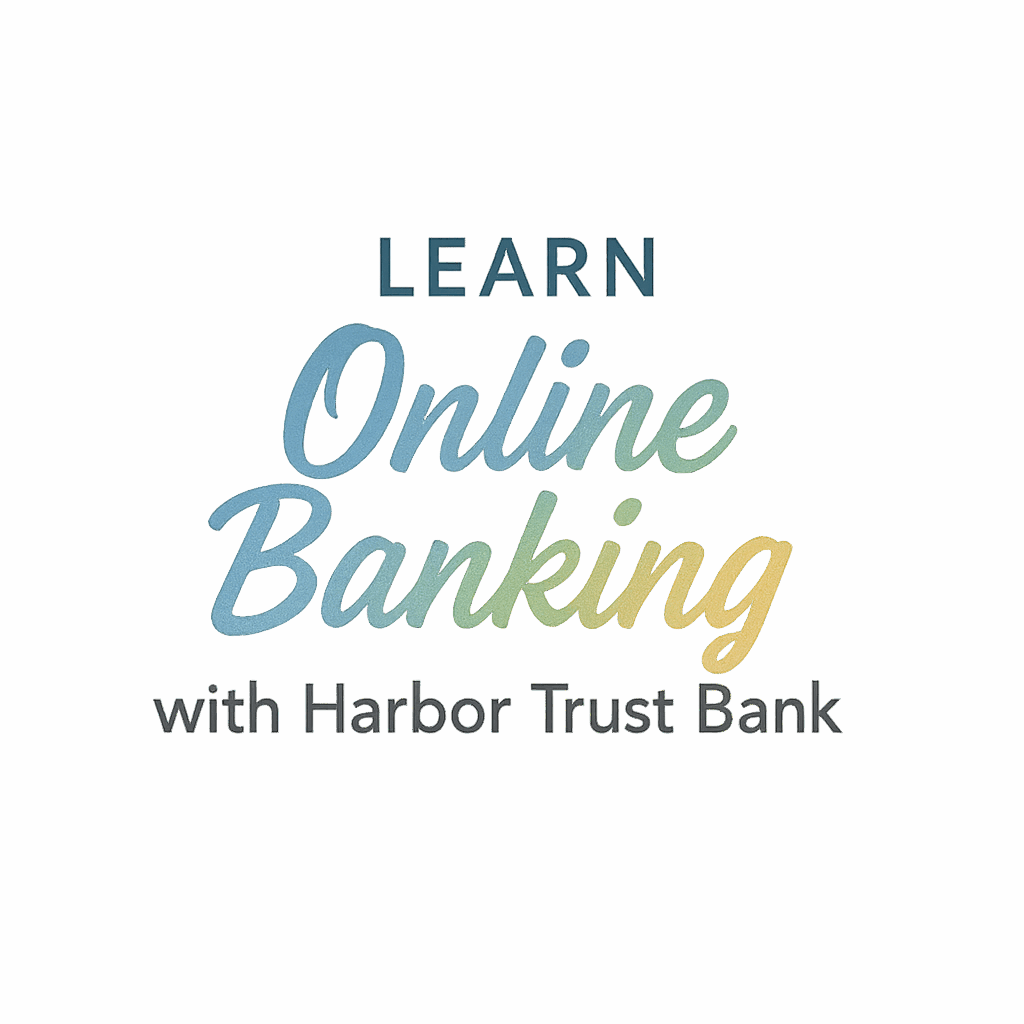Let’s be real — the days of stuffing coins into piggy banks are slowly giving way to apps, online accounts, and digital dashboards. And guess what? That’s actually a good thing.
With the rise of online banking, we have a golden opportunity to teach kids financial literacy in real-time, using real tools they’ll use as adults. So, if you’re wondering how to help your children grow into financially smart adults, this guide will walk you through six key lessons you can teach with the help of digital banking platforms — especially with tools like those at Harbor Trust Bank.
Why Teaching Kids About Money Early Matters
Kids who learn money management early build confidence, responsibility, and smart habits that stick for life. Waiting until college or adulthood can lead to poor decisions, like overspending or ignoring savings. Start young and set them up for success.
According to recent studies, children form their financial habits by age 7. That means your kid could be developing a lifelong relationship with money before they even hit middle school.
The Power of Online Banking for Young Learners
Gone are the days of tracking money in ledgers. With online banking, kids can learn about money in a visual, interactive way.
Benefits of Digital Tools for Financial Education
- Real-time updates: See balances and transactions instantly.
- Budgeting tools: Set goals and track them visually.
- Alerts and parental controls: Keep spending in check.
- Mobile access: Perfect for tech-savvy kids.
Platforms like Harbor Trust Bank’s family dashboard make it easier than ever to involve children in the banking process.
Lesson 1: Budgeting Basics Through Online Banking
Teaching budgeting doesn’t have to be boring. In fact, kids often love it when it feels like a game.
Helping Kids Track Their Spending
Start by linking their account to an app or dashboard that shows where the money is going. Let them see when their weekly snack splurge drains their balance.
Use Categories and Labels in Online Banking Apps
Harbor Trust Bank’s advanced features allow you to label transactions — groceries, toys, games — so they can visualize their spending habits.
Setting Simple Budget Goals Together
Break things down. Maybe they want to save $20 for a new toy? Use budget tools to set that goal and watch the progress bar grow. It’s like a digital piggy bank — way cooler, way smarter.
Lesson 2: Understanding Saving and Interest
Saving teaches patience, planning, and reward. Online banking makes that lesson click.
Opening a Savings Account for Kids
Open a kids’ savings account through your Harbor Trust account. Show them how every dollar they don’t spend can work for them.
Showing How Interest Accrues in Real-Time
With online banking, they can see their money grow with interest. Even if it’s just a few cents, it teaches them the magic of compound growth.
Gamifying Saving Goals with Progress Bars
Saving becomes fun when they can track progress toward that new bike or video game. Add visuals, colors, and rewards to keep them motivated.
Lesson 3: Safe Spending Habits Online
It’s not all about saving — spending wisely is just as important.
Using Parental Controls and Alerts
Tools like Harbor Trust Bank’s parental controls help you set limits, get alerts for unusual activity, and freeze accounts if needed.
Teach Them to Recognize Scams and Phishing
Explain why they should never click sketchy links or share their login info. Show them tips to avoid phishing, especially those sneaky game ads or fake giveaways.
Let Them Make (Safe) Mistakes and Learn
Maybe they blow their allowance on something silly. That’s okay. A small mistake now can teach a big lesson for later.

Lesson 4: Setting Financial Goals Early On
Goals give purpose to money. They also teach kids the joy of achievement.
Short-Term vs Long-Term Goal Planning
Break it down:
- Short-term: A toy next month.
- Long-term: A new bike in 6 months.
Discuss the difference and help them plan accordingly.
Use Online Tools to Visualize Progress
Online banking dashboards can turn financial goals into visual charts. Try tools like those in Harbor Trust Bank’s guide section to show them progress over time.
Lesson 5: How Shared Accounts Build Trust
Money can become a family affair — and that’s a good thing.
Guide Them in Managing Joint Spending Wisely
A shared account lets both of you monitor spending. Let them use it for school lunches, small gifts, or online purchases — with boundaries.
Transparency Builds Financial Honesty
When kids know you can see what they spend, it encourages better decisions. Trust flows both ways.
Lesson 6: Protecting Their Financial Identity
The digital world has its risks — and kids should learn how to protect themselves.
Teaching Password Hygiene and 2FA
Start early:
- Use strong, unique passwords.
- Enable two-factor authentication.
Use Harbor Trust’s security hub to explain account safety practices.
Reviewing Account Activity Together
Sit down once a week and review transactions. Make it a bonding ritual. Spot anything suspicious? Great teaching moment.
Also, check out more account security tips to keep your kid’s online finances airtight.
How Harbor Trust Bank Can Help Families Thrive
Tools, Tutorials, and Family-Friendly Features
From beginner guides to interactive dashboards, Harbor Trust Bank gives families the tools they need to raise money-smart kids.
Built-In Security for Young Users
Their features around automation, safety, and parental guidance are designed to make teaching money easy and safe.
Final Thoughts: Growing Up With Good Money Habits
Teaching kids about money doesn’t have to be a chore — and thanks to online banking, it’s never been easier or more interactive. From budgeting to security, your child can learn real-life skills from the safety of your home.
So why wait? Start today and turn your kid into a money pro — one digital dollar at a time.
FAQs: Financial Lessons and Online Banking for Kids
1. What’s the best age to start teaching kids about online banking?
Start as young as 6–7 years old. That’s when habits begin to form. Use visual tools and make it fun.
2. Is it safe to let my child use online banking tools?
Absolutely — especially with parental controls and guidance from secure banks like Harbor Trust.
3. How do I explain interest to a child?
Use analogies — like their money “growing” when it rests. Show it through savings interest in real-time.
4. What should I do if my kid falls for a scam?
Stay calm, freeze the account, and report it. Then revisit anti-phishing lessons.
5. Are there kid-specific features at Harbor Trust Bank?
Yes! Check out Harbor Trust for families for tools tailored to parents and children.
6. How can I track my kid’s spending easily?
Use dashboards, transaction alerts, and weekly reviews. Harbor Trust offers advanced features that help with this.
7. Where can I learn more about online banking for beginners?
Check out Harbor Trust Bank’s beginner guides and tips to help both you and your child get started.


